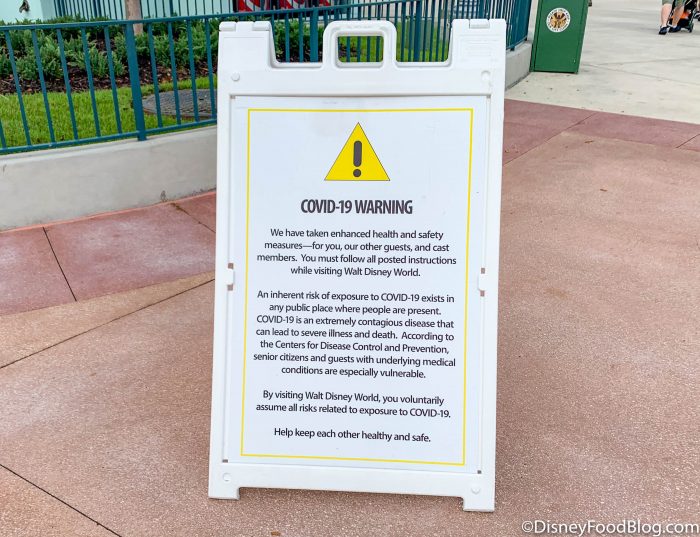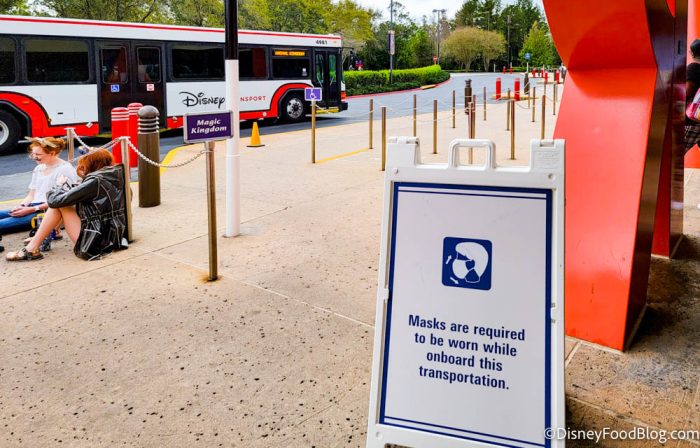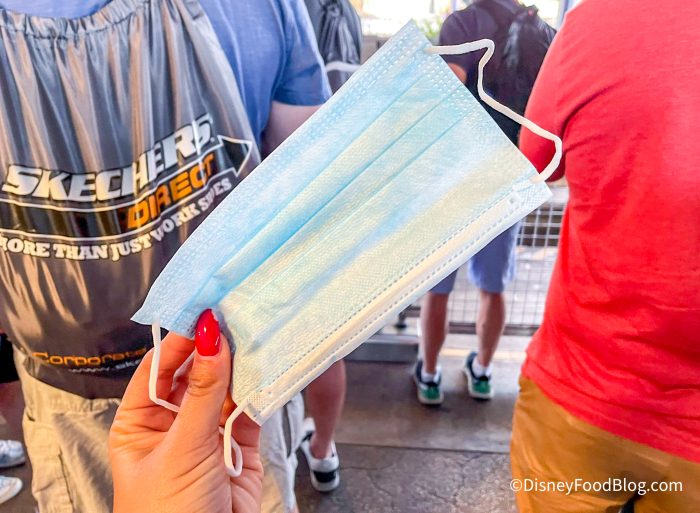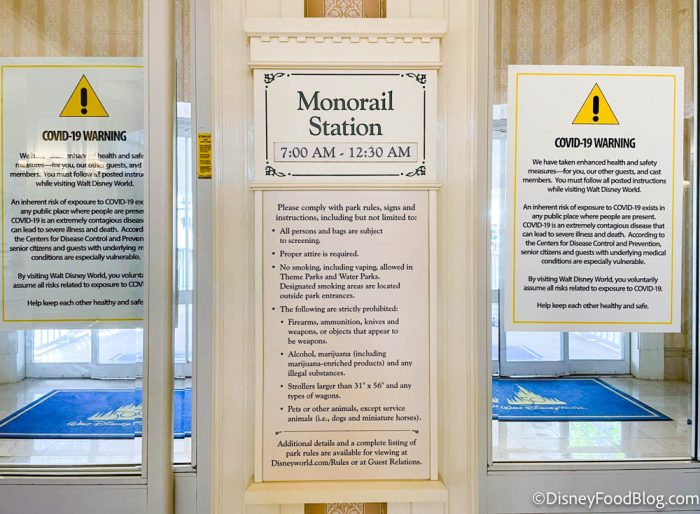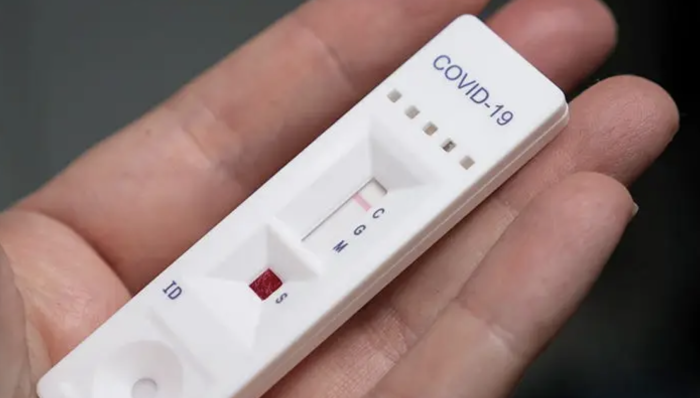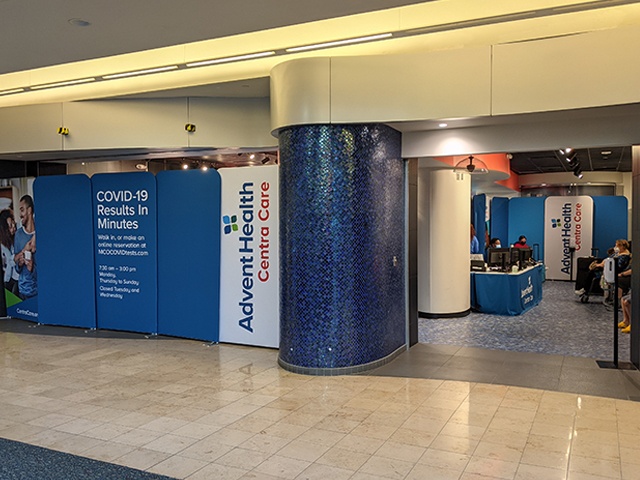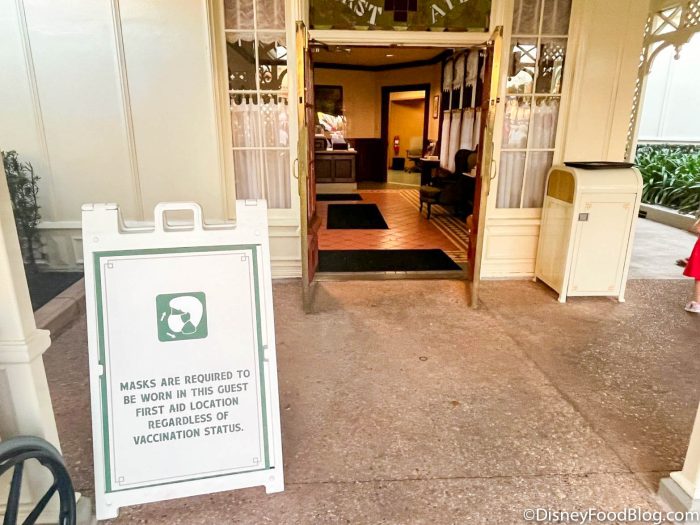To ensure we are equipping our readers with all the information they need, we will continue to report on all travel, safety, and COVID-related news that could impact a Disney Parks visit.
Mask requirements, distancing, testing — the COVID-19 pandemic has changed the entire world and continues to impact Disney’s theme parks in the U.S. and beyond. And the situation with the COVID-19 virus and its variants just keeps changing.
We previously shared all about the Delta variant, and the Omicron variant. We also noted that a subvariant of the Omicron variant, previously deemed “Stealth Omicron,” had been discovered in various spots throughout the world, including Florida. Just what it “Stealth Omicron” and what should you know about this before your next trip, to Disney World or elsewhere? Here’s what we know.
What is “Stealth Omicron” Generally?
According to the New York Times, researchers have been keeping an eye on the Omicron subvariant known as BA.2 or “Stealth Omicron” for some time now.
As the Tampa Bay Times previously shared, this subvariant was initially discovered in Denmark and has since reached the U.S. WPTV West Palm Beach previously reported that “Stealth” Omicron had been found in Florida. It was reported in the state in February of 2022. There were 2 cases previously discovered there.
According to WPTV, the subvariant was termed “Stealth” Omicron because it was harder to detect than the original Omicron variant. But things have since changed when it comes to detecting this subvariant. The New York Times notes that the “Stealth Omicron” nickname is “outdated.”
Previously, Stealth Omicron was difficult to detect in P.C.R. tests because it was essentially “indistinguishable from Delta.” But the New York Times shares that “now that Delta has gone from dominant to rare, it’s easy to distinguish the two versions of Omicron on a P.C.R. test.”
Click here to see our initial post about Stealth Omicron in Florida
It Appears To Be More Transmissible
While the BA.1 version of Omicron quickly spread around the world initially, the New York Times notes that BA.2 (Stealth Omicron) has started to be “found in a larger proportion of new infections” in 2022. In fact, recently Stealth Omicron has been spreading even faster than Omicron’s BA.1 version.
WPTV also previously shared that this specific subvariant may be 1 1/2 times more contagious than the original Omicron COVID-19 variant.
Why might that be the case? The New York Times says that scientists think it might have to do with Stealth Omicron’s “unique mutations.” It has a number of mutations that weren’t found in the BA.1 version.
According to the New York Times, “It appears that these mutations speed up BA.2 by making it more transmissible, rather than better able to evade immunity.” Several studies/scientists, including some in Denmark, England, and Hong Kong, have found evidence that seems to support this.
In some countries, the rise of this Stealth Omicron variant has “roughly coincided” with a new surge of COVID-19 cases. This could be due to the fact that it is more transmissible, but the New York Times shares that it is hard to “disentangle the subvariant’s effects from other factors.”
For example, some places have dropped many of their COVID-19 regulations (masks, distancing, etc.) “making it easier for any coronavirus to jump from one person to another.” Waning vaccine protection from those who got vaccinated early last year can also impact things.
Click here to see the latest updates on Disney World’s mask policies
What’s Happening in the U.S. and the World Right Now?
In light of the rise of Stealth Omicron, what’s happening with COVID-19 case numbers in the United States right now? Case numbers in the United States continue to decline. According to a chart from Google, made through data from the New York Times, the latest 7-day average (as of March 17th, 2022) is 30,235. That’s much less than the 739,002 7-day average seen back on January 24th, 2022.
But, even as case numbers get lower, Stealth Omicron now has started to account for more of the COVID-19 cases that are still occurring in the U.S., according to data from the CDC. As of around mid-March, the CDC has indicated that the Stealth Omicron subvariant accounted for about 23% of the cases in the U.S during a recent period.
According to the LA Times, previously this subvariant had only made up 13.7% of U.S. cases, and just 7.1% the week before that.
Newsweek shares that experts have indicated that the BA.2 subvariant could become the dominant variant of COVID-19 in the United States within weeks.
The New York Times shares that as states around the U.S. drop their mask requirements and other COVID-19 protection measures, Stealth Omicron “may be able to spread more easily from person to person.”
But, will it drive a new spike of cases and hospitalizations due to COVID-19? Maybe not, at least according to the New York Times. The New York Times notes that scientists have been comparing how well vaccines work against Stealth Omicron versus the BA.1 Omicron version. In one laboratory study in Boston, scientists saw that the Pfizer COVID-19 vaccine “did equally poorly against both BA.1 and BA.2…But after people got booster shots, their antibodies worked well at neutralizing both subvariants.”
According to New York Times, “Researchers in Qatar found that booster shots were about 40 percent effective against infection with either BA.1 or BA.2 a month after injection. The boosters were about 90 percent effective against hospitalization.”
It also appears that individuals who got infected with the BA.1 version of Omicron developed antibodies that provided “strong protection against infection with BA.2.”
Experiments have also been going on when it comes to Stealth Omicron’s severity level. In Japan, some researchers infected hamsters with the 2 Omicron variants (BA.1 and BA.2). They found that BA.2 “causes more severe disease,” but it’s not clear if hamsters really serve as a good model for humans in this case.
British researchers and researchers in Denmark, on the other hand, have found that Stealth Omicron “does not carry a higher risk of hospitalization than BA.1.” Yale Medicine also shares that “BA.2 does not appear to cause more severe illness than the original variant.”
There are also some medications that work against Stealth Omicron, including Evusheld made by AstraZeneca, and the antiviral drugs Paxlovid, molnupiravir and remdesivir. But CBS News shares that early studies have shown Stealth Omicron could “significantly reduce the effectiveness” of a monoclonal antibody drug treatment.
But, some are a bit more concerned about Stealth Omicron. According to NBC Chicago, Dr. Allison Arwady, the Director of the Chicago Department of Public Health said, “I’m going to be honest, I am concerned about what’s happening in Europe because I think there is not a full understanding of it.”
NBC Chicago also noted that “In the last two weeks, COVID-19 hospitalizations and deaths have both risen slightly in Britain.” Dr. Ghinai from the City of Chicago Public Health Department said “I think it’s very likely that what we’ve seen in Europe, where BA.2 is increasing in relative proportion, is going to happen here.”
But still, Dr. Ghinai said “I don’t expect the same kind of surge that we saw in late 2021 as a result of BA.2.”
What Could Be Next?
While BA.2 might be the concern now, NBC Chicago shares that some experts have suggested that the next COVID-19 variant could arrive as soon as May of 2022. Dr. Ghinai said that officials are expecting more variants to emerge, but it’s not clear if they’ll be more severe than previous strains.
CBS News shares that a rise in the prevalence of Stealth Omicron could mean more individuals will be “scrambling” to get courses of the medicines that can help, like Evusheld. According to CBS News, “While BA.2 appears to retain “near-full susceptibility” to Evusheld, the Food and Drug Administration recently warned that doses would need to be doubled to protect against BA.1.”
Disney World
Heading to Disney World soon and wondering what’s going on there and how the subvariant could impact things? Well, at the moment masks are still required in select locations in Disney World.
Masks are currently optional for fully vaccinated guests in indoor locations, the Disney Skyliner, and the transportation from the Star Wars Hotel to Galaxy’s Edge. Guests who are not fully vaccinated, however, are expected to continue to wear masks in indoor locations, on the Disney Skyliner, and on that Star Wars Hotel transportation.
When it comes to Disney buses and monorails, as well as Disney’s First Aid locations, masks are required for ALL guests, regardless of vaccination status.
Depending on how the situation with Stealth Omicron continues to develop, we could see changes made when it comes to Disney World’s mask rules or other COVID-19 policies. We have, however, continued to see more reopenings announced and crowds continuing to fill the parks, despite the existence of the Omicron variant in general. Distancing has essentially been done away with and many reopenings have been announced or taken place, though some things still haven’t returned to the parks.
Be sure to check for any updates regarding health and safety rules ahead of your next trip.
Click here to see what you need to know about the Omicron COVID-19 variant and Disney World
Of course, this is a developing situation. We’ll keep an eye out for more news about this subvariant and let you know what we see. Be sure to check back with us for more updates.
Click here for a full list of current travel restrictions and border closures due to the Omicron variant
Join the DFB Newsletter to get all the breaking news right in your inbox! Click here to Subscribe!
The post What You Need to Know About the “Stealth” Omicron COVID-19 Variant Before Your Next Disney Trip first appeared on the disney food blog.


